
Li W. R., Shorttle O., Maclennan J., Matthews S., Zhang Y. et al. (2025). Journal of Petrology.
Ocean island basalts (OIBs) have long been associated with anomalously hot mantle upwellings, or "hotspots." In this project, we extend the application of our olivine-spinel thermometry to estimate mantle temperatures and source lithologies beneath 17 ocean islands and one mid-ocean ridge setting. Our results show that primitive olivines in many OIBs have experienced partial diffusive re-equilibration. However, the framework we establish in this study remains broadly applicable and offers a valuable tool for probing mantle thermal and compositional structure across a range of tectonic settings.
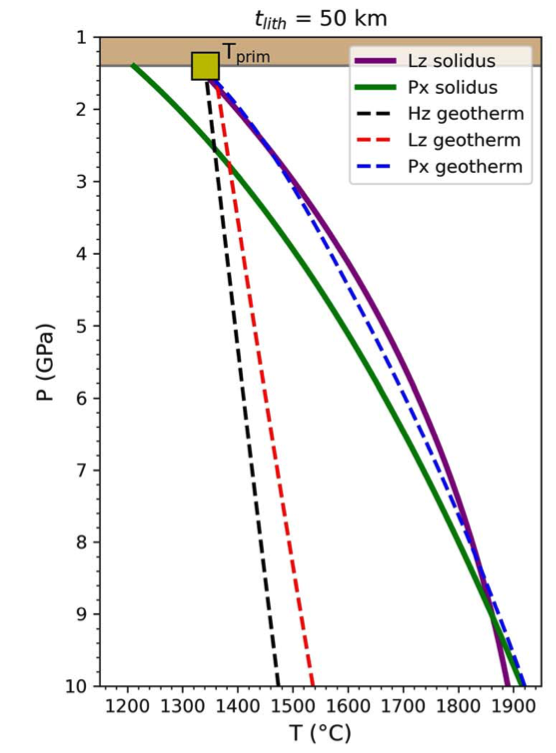
Crystallization temperatures predicted from the new thermodynamic model based on olivine-spinel Al exchange
Zhang et al. (2023). Journal of Petrology.
Temperature is a key to probe the structure and dynamics of planetary mantles. In this project, we experimentally
calibrated a robust olivine-spinel Al thermometry (OSAT) based on the Al exchange between olivine and spinel. This allows
for precise estimation of crystallization temperatures of primitive olivine. By applying this thermometer to natural
olivine-spinel pairs, we infer mantle melting conditions and source lithology. Our results reveal that the mantle is
less hot than previously thought—largely due to the presence of a significant proportion of fusible pyroxenite in the source.
This work was published in Journal of Petrology and selected as the Editor’s Choice Award.
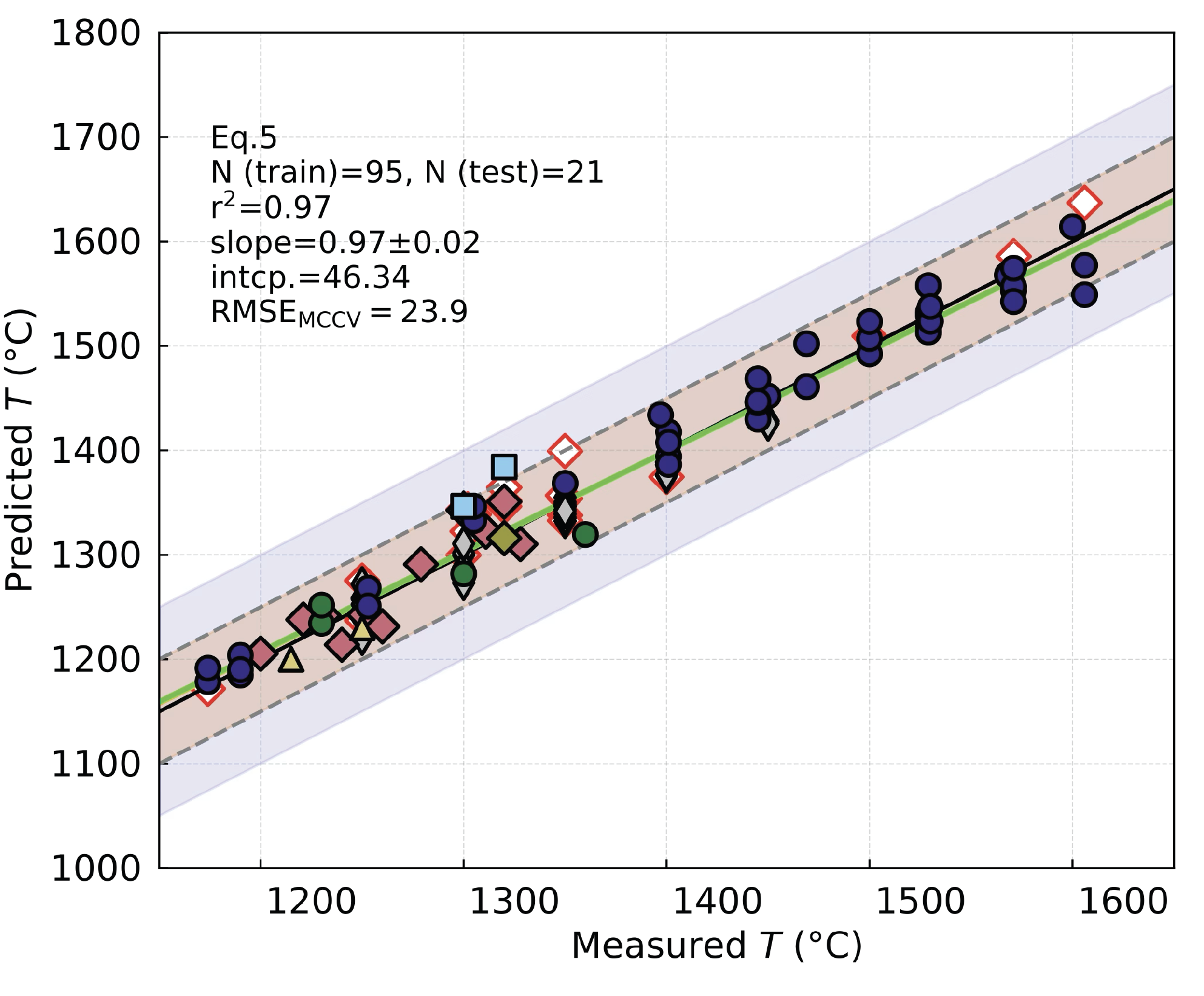
Crystallization temperatures predicted from the new thermodynamic model based on olivine-spinel Al exchange
Zhang et al. (2023). Contributions to Mineralogy and Petrology.
Large Igneous Provinces (LIPs) represent the most voluminous volcanic events in Earth's history. These events occur over geologically short timescales and are often associated with significant Fe-Ti oxide ore deposits. In this project, we perform experiments with a stepwise approach to simulate the fractional crystallization of primitive magmas in LIPs to constrain the resulting differentiation products.
Our results show that late-stage LIP magmas can undergo silicate liquid immiscibility, a process in which the melt separates into compositionally distinct liquids. This immiscibility plays a critical role in concentrating ore-forming components and thus exerts a fundamental control on the formation of Fe-Ti oxide deposits in LIPs.
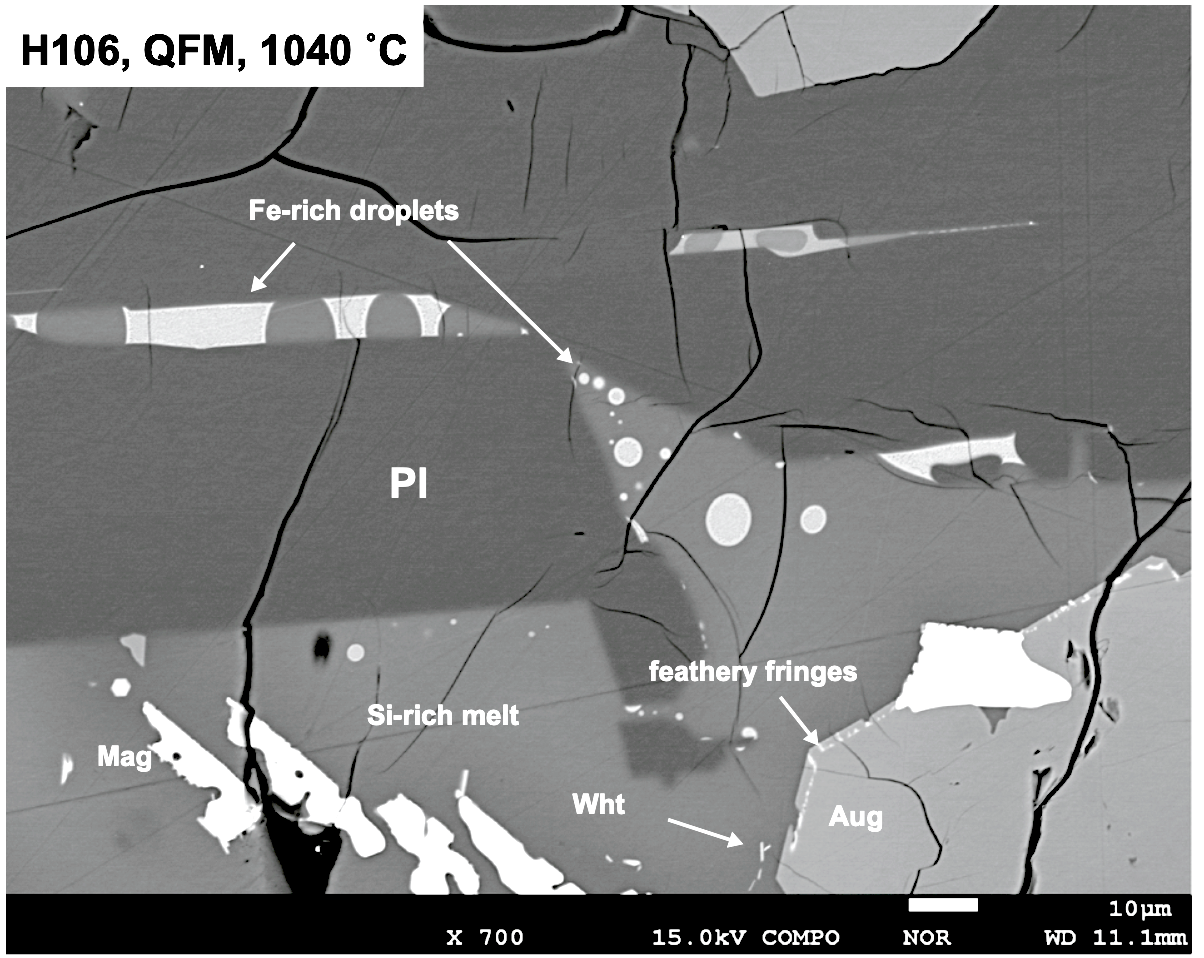
Silicate liquid immiscibility during late-stage magma differentiation in LIPs
Zhang et al. (2025). Geophysical Research Letters.
Our understanding of the lunar interior has significantly advanced thanks to sample returns from the Moon’s nearside. However, the Moon exhibits a striking hemispheric asymmetry in surface topography, basaltic composition, volcanic morphology, and, most notably, crustal thickness. The farside is dominated by a thick anorthositic crust, unlike the thinner, basalt-covered nearside. To unravel the origin of this asymmetry, it is essential to investigate the interior structure of both hemispheres. In this study, we reconstruct the mantle melting conditions responsible for producing mare basalts in the South Pole–Aitken (SPA) basin, the largest and deepest impact basin on the lunar farside, potentially exposing lower crust and upper mantle materials. Our results show that if the mantle compositions beneath both hemispheres are similar, melting beneath the farside occurred under colder and shallower conditions. This supports the hypothesis that long-term crustal thickening on the farside may have limited mantle upwelling and contributed to the development of the lunar crustal dichotomy.
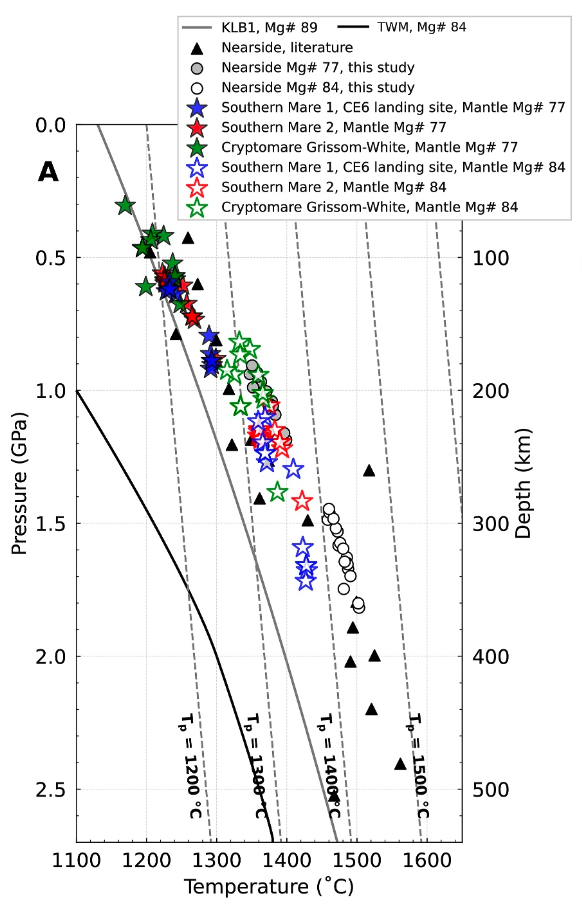
Mantle melting models constrain the pressure-temperature conditions of magma generation on both the lunar farside and nearside.
Zhang et al. (2024). Earth and Planetary Science Letters
The late stages of lunar magma ocean (LMO) crystallization produced ilmenite-bearing cumulates and urKREEP, residual melts enriched in potassium (K), rare earth elements (REEs), phosphorus (P), and other incompatible elements. These highly evolved lithologies played a critical role in the petrogenesis of lunar volcanic rocks and contributed to the compositional diversity of post-LMO magmatism through subsequent mantle remelting. The origin of urKREEP has traditionally been attributed to extreme fractional crystallization. However, this model struggles to explain the observed decoupling of K and P in many lunar samples. In this study, we conduct experiments to simulate the crystallization sequence of late-stage LMO liquids and evaluate the potential development of silicate liquid immiscibility (SLI). Our results show that SLI may occur after ~97% of LMO crystallization, leading to the formation of immiscible urKREEP liquids. The segregation of Fe-rich and Si-rich endmembers may account for the decoupled geochemical signatures observed in lunar rocks and may have facilitated the generation of silicic magmatism on the Moon.
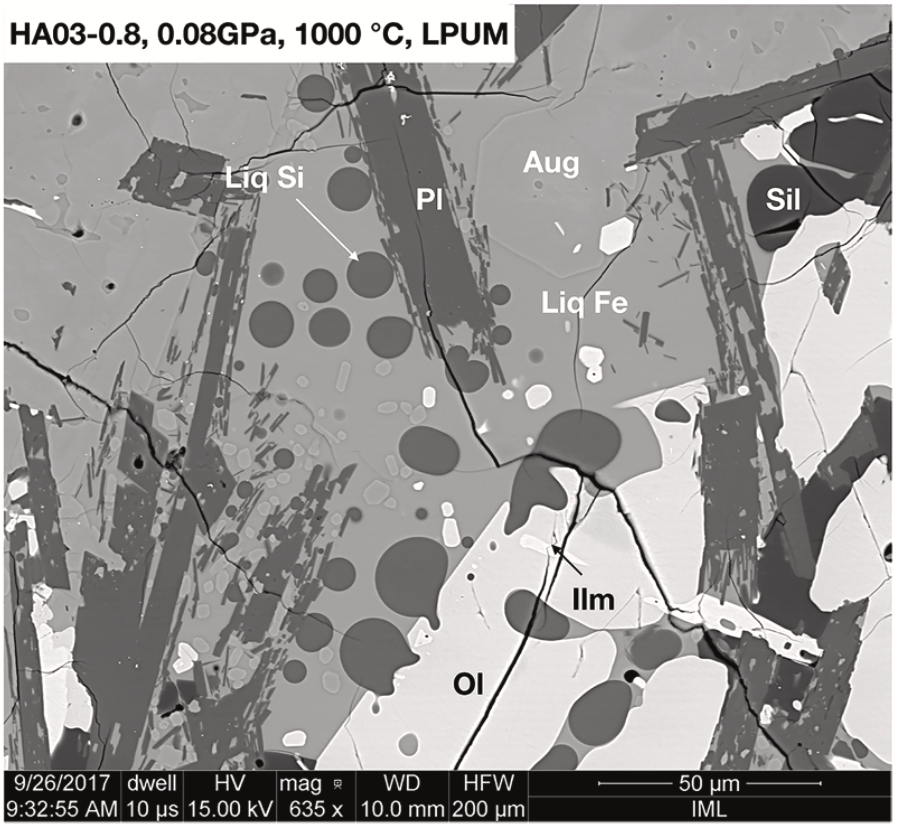
Late-stage silicate liquid immiscibility in a LPUM-derived melt.
Saracino et al. (2025). Chemical Geology, Zhang & Dasgupta (in prep.)
Data from NASA's MESSENGER mission reveal that Mercury's surface is enriched in S and depleted in Fe, suggesting that the planet is significantly more reduced than the other terrestrial planets in the Solar System. The high S content in Mercury’s interior may strongly influence the bonding behavior of major rock-forming elements and, consequently, the pathways of melt differentiation. In this project, we systematically investigate the effect of S on silicate phase equilibria, focusing particularly on its role in liquidus depression. Our experimental results demonstrate that S can significantly lower the liquidus temperature by preferentially bonding with Mg, thereby destabilizing key silicate minerals. This S-induced melting behavior may have played a critical role in generating magmatism on Mercury.

liquidus depression as function of S concentration in the silicate melt.
Xu Y, Lin Y, Wu P, Namur O, Zhang Y, & Charlier B. (2024). Nature Communications
Carbon has also been identified in Mercury in relatively high abundances. Under the planet’s highly reduced conditions, this carbon is likely to saturate and form graphite. However, recent geophysical constraints suggest that the pressure at Mercury’s core–mantle boundary (CMB) may be sufficiently high to induce the phase transition from graphite to diamond. In this study, we combine high-pressure experiments with thermodynamic modeling to investigate the potential for diamond formation at Mercury’s CMB. Our results indicate that while diamond stability in the early magma ocean is possible, it is statistically unlikely. However, during the solidification of Mercury’s inner core, the progressive cooling of the molten outer core could have led to diamond crystallization, forming a distinct diamond-rich layer at the base of the mantle.
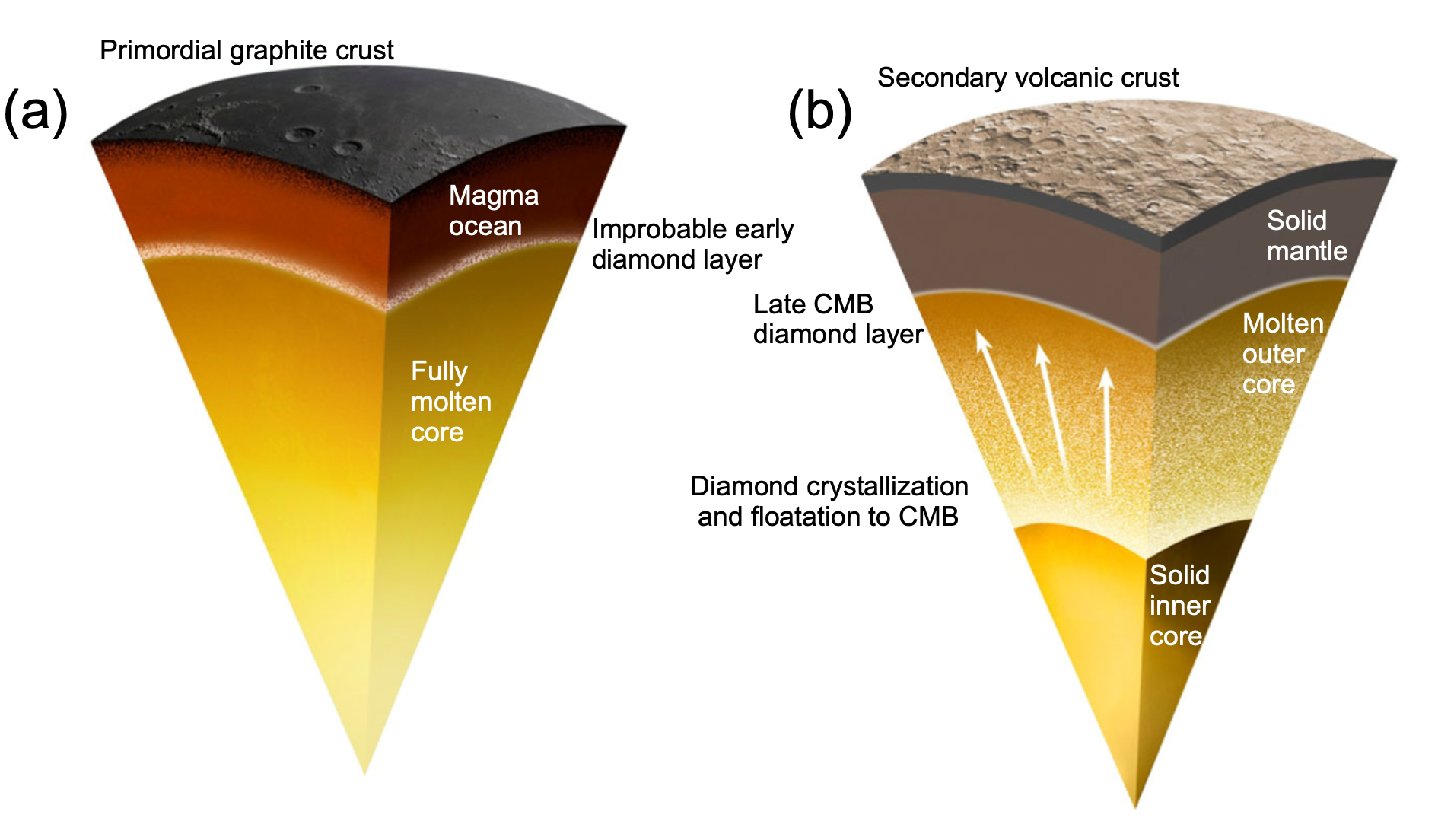
Schematic illustration of diamond formation at Mercury’s core–mantle boundary.